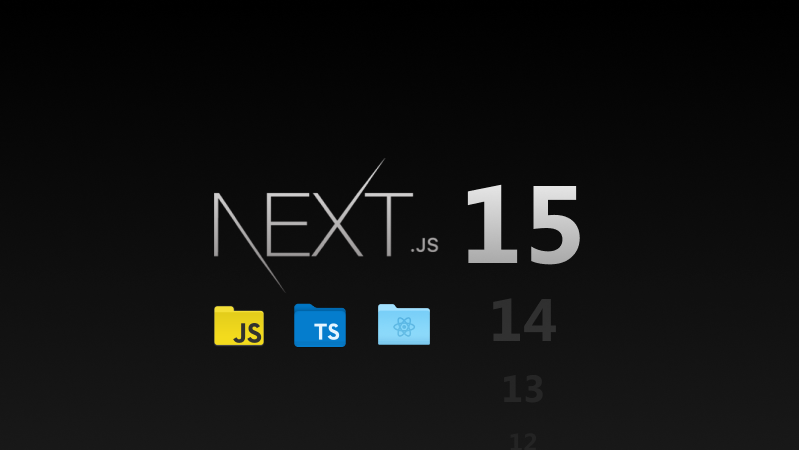In today’s fast-paced web ecosystem, developers need tools that are flexible, performant, and future-ready. Next.js 15 delivers on all fronts. Whether you’re building static websites, dynamic dashboards, or enterprise-grade applications, this version introduces groundbreaking features that take developer productivity and user experience to the next level.
In this post, we’ll walk through the top 7 features in Next.js 15 that are engineered to supercharge your web apps — plus practical use cases, code examples, and why they matter.
1. 🔄 React Server Actions (Stable with React 19)
Say goodbye to complex API routes.
Next.js 15 supports React Server Actions, allowing you to handle server logic directly inside your component files.
🚀 How it works:
// Inside your component file
"use server";
export async function saveForm(data) {
await db.save(data);
}🧠 Why it matters:
- No need to create separate
api/endpoints. - Full type safety with server logic co-located.
- Less client-side JavaScript shipped.
Ideal for: Form submissions, database updates, authenticated mutations.
2. 🧭 Stable App Router with Layouts and Nested Routing
Introduced in v13 and now fully stable, the app/ directory in Next.js 15 gives you modular routing with nested layouts, co-located data fetching, and component-based architecture.
📁 Folder structure:
app/
layout.tsx
page.tsx
dashboard/
layout.tsx
page.tsx
🎯 Why it matters:
- Improved scalability for large apps
- Built-in support for error boundaries and loading states
- Cleaner structure that mirrors component trees
Ideal for: Scalable dashboards, admin panels, modular websites.
3. ⚙️ Partial Prerendering (PPR)
Static + Dynamic rendering in one page? Yes, please.
Next.js 15 introduces Partial Prerendering, an experimental feature that allows you to render part of a page statically and the rest dynamically.
💡 Use case:
Your homepage might have:
- A statically rendered hero section
- A dynamic, user-personalized feed
🧠 Why it matters:
- Faster load times for static content
- Seamless hydration for dynamic sections
- Enhanced user experience without trade-offs
4. ⚡️ Turbopack (Improved Performance)
Turbopack, Vercel’s Rust-based successor to Webpack, continues to mature in Next.js 15. It offers:
- Blazing-fast cold starts
- Incremental compilation
- Near-instant HMR (Hot Module Reloading)
🧪 How to enable:
next dev --turbo🚀 Why it matters:
- 10x faster rebuilds compared to Webpack
- Smooth DX for teams working on large monorepos
Note: Still experimental but highly promising.
5. 🖼️ Smarter <Image /> Component
Image optimization just got smarter. The updated next/image now supports:
- Native lazy loading
- Blur-up placeholders
- AVIF + WebP support out of the box
🧠 Why it matters:
- Faster Core Web Vitals (especially LCP)
- Reduced bandwidth and better UX
- Simplified image management
6. 🌐 Edge Middleware Enhancements
Next.js 15 improves the DX around Edge Middleware, allowing you to run logic at the edge without cold starts or serverless latency.
📦 Use cases:
- A/B Testing
- Geolocation-based redirects
- Auth checks at the CDN level
🔥 Improvements:
- Better logging and error traces
- Enhanced compatibility with dynamic routes
7. 🧪 React 19 Compatibility
Next.js 15 is one of the first frameworks fully compatible with React 19, bringing:
- React Compiler support (in alpha)
- Enhanced Concurrent Features
- Better memory and rendering optimizations
🧠 Why it matters:
You can future-proof your app now and explore experimental features with a stable foundation.
Conclusion
Next.js 15 isn’t just about new APIs — it’s about enabling faster, more scalable, and more maintainable apps with less effort. These 7 features are engineered to help modern teams:
✅ Ship faster
✅ Write less code
✅ Deliver better performance
Whether you’re migrating a legacy React app or starting fresh, Next.js 15 equips you with the tools to build next-gen experiences today.
Ready to Supercharge Your Stack?
Which feature are you most excited about?
Leave a comment, share this post with your team, or try upgrading today:
npm install next@latest👉 Follow for more Next.js deep-dives and practical guides.

Leave a Reply